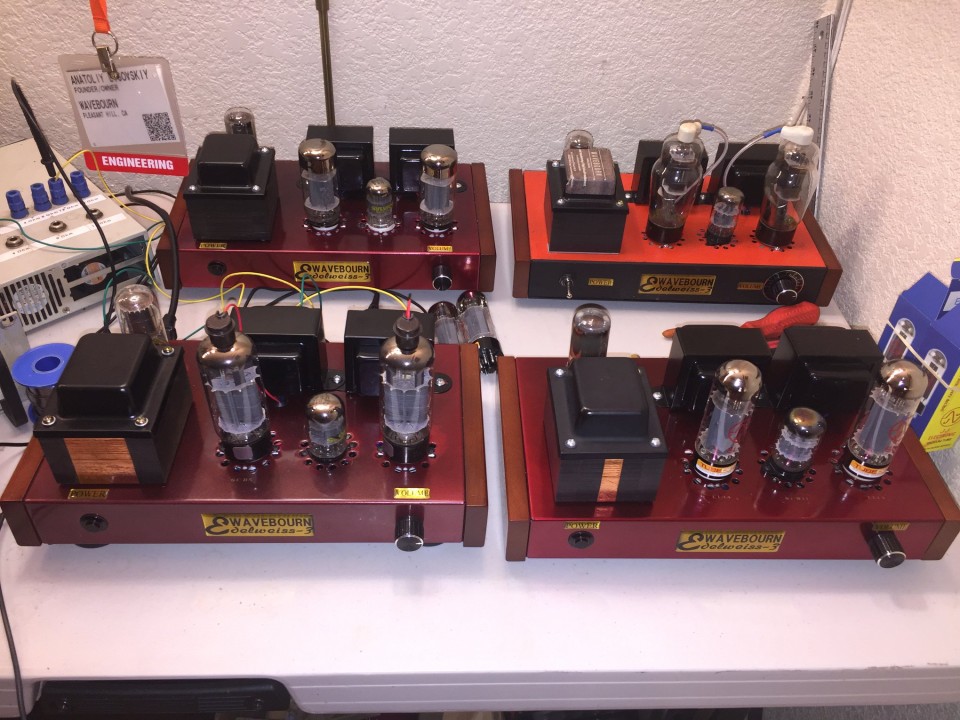
I was asked, why pentodes, why I don't use 300B tubes in my amps?
There are people who do restoration of vintage cars, and if there is the demand, they make copies. It is their business, not mine.
300B triodes were designed when people knew not much about sound reproduction, capacitors and resistors were quite expensive; it was cheaper to wind transformers and chokes.
In order to get linear sound reproduction they designed special tubes, compromising amplification factor for linearity and low output impedance. They were especially crafted tubes to use in as simple as possible amplifiers. The end result of such amplifiers depends very much on particular tubes. In order to get stereo amplifier you have to match many tubes to find one matched pair. To get better sound you have to select better tubes. Why Western Electric 300B tubes are so expensive, because they were made to sound best in simple amplifiers where everything relied on tubes. Such amplifiers can nor drive properly any speakers. They need speakers that have particular mechanical damping.
However, today we know more, resistors and capacitors are cheaper than in 1930'Th, and can design amps that do not require so strict selection of 300B tubes, but what's the point then if their major properties are not used? For modern amps more convenient tubes are available, they are much cheaper, and are in current production.
For example, in my Edelweiss-3 I can use 6L6, 5881, EL34, KT77, KT88, KT120 tubes, adjusting self-bias by a single potentiometer observing bias on digital gauges under tubes. I can select high output impedance for "current drive" of some speakers like pentode amplifiers without feedback do. For other speakers I can select medium output impedance like triode amps (including 300B) have. I can select low output impedance to drive modern hi-fi speakers that want solid state amplifiers. Or even negative output impedance for servo-damping of speakers making frequency response on bass frequencies more even and extended.
Frequency response of my amps is pretty wide, from 6 Hz to 90 KHz, without special output transformers that cost today a fortune.
And gain of both channels stays the same, no matter which tubes you swap. Dynamic distortions are minimal thanks to solid state voltage regulation and other measures I took while designing my amps. No such "bloating" on overload like in typical 300B amps. No audible hum.
I.e. I design my amps in 21'St century, you can compare them to 5-10 times more expensive amps with 300B tubes and see for yourself, which would you prefer for listening, reliability, and easiness of usage, when you don't need to roll awfully expensive tubes to get clean sound that you love.
And once again, my amps are not SET. They use 2 pentode stages with 3 nested feedback loops, to get transfer curves especially crafted, similar to what Western Electric were getting specially crafting tubes.
In short, Western Electric were trading gain of the tube for desired transfer curves using precise internal geometry. I trade gain of pentodes using external components for similar transfer curves, to get better results cheaper. :-)
